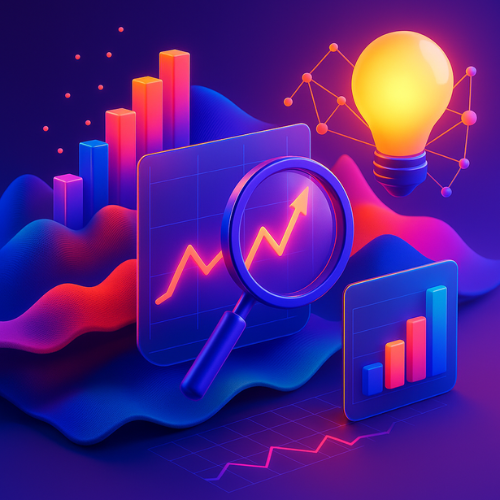You have the data. Daily, your teams monitor sales metrics, track web traffic, pull sensor readings, and review operational logs. But too often, these streams of numbers are only used to confirm what’s already happened.
By the time a dashboard shows a spike or a drop, it’s already too late.
The real question isn’t “What did we miss?”
It’s “Could we have seen it coming?”
This is where many organizations hit a wall. They’re surrounded by information but can’t use it to anticipate change. And the cost is real: overstocked shelves, underprepared teams, delayed responses, and missed opportunities.
What if your team could forecast demand before the spike?
Spot a system failure before it causes downtime?
Notice the early signals of a trend while there’s still time to act?
That’s exactly what this learning path is designed to enable.
A Learning Path for Forecasting, Trend Analysis, and Anomaly Detection
Data Society’s Analyze Temporal Data for Forecasting and Trend-Spotting learning path gives technical teams the ability to turn time-based data into clear, forward-facing insight.
In guided, instructor-led labs, learners break down seasonality and cycles in time series data, build forecasting models with ARIMA, and set up anomaly detection systems using models trained on rolling statistics.
More than just new techniques, this path helps teams shift from reacting to leading, equipped with skills that directly influence strategy, efficiency, and resilience.
Who This Path Is For

This learning path is designed for teams that rely on timely, reliable decision-making. It’s especially useful for:
– Data scientists and analysts who build predictive models
– Operations and supply chain teams managing logistics
– Finance and BI teams forecasting trends and budgets
– Engineers and risk analysts monitoring system performance
If your teams work with time-stamped data but still depend on lagging indicators, this course helps them close that gap.
MUST READ: Custom LLMs, Real Impact: Build and Deploy AI That Fits Your Business
What Your Teams Will Learn
Across multiple hands-on modules, learners will:
– Decompose time series data to uncover seasonality and cycles
– Forecast future values using ARIMA models
– Train anomaly detection models based on rolling and periodic statistics
– Build automated pipelines in Python for real-time insight
– Translate patterns into strategic plans and business actions
They won’t just learn models. They’ll build the confidence to apply them to real-world challenges immediately.
Customized to Your Data, Tools, and Goals
Every engagement begins with a collaborative scoping session. We align the curriculum to your internal systems, strategic priorities, and workflows.
Your teams will work with your data, your language, and your real use cases. We can also incorporate your subject matter experts, internal decision scenarios, and role-specific examples to ensure the training feels relevant and actionable.
All training is instructor-led and supported by our Learning Hub and Virtual Teaching Assistant, giving learners real-time feedback and accountability throughout the program.
MUST READ: Your Competitive Edge in AI and Data Training: The Data Society Learning Hub
Why Now
Markets shift. Behavior changes. Systems fail. And in a world where everything moves quickly, the ability to anticipate, not just analyze, can make or break your organization’s performance.
The teams that thrive aren’t the ones with more dashboards. They’re the ones that can forecast what’s coming and respond before it happens.
This learning path helps them get there.
About Data Society
Data Society delivers instructor-led, high-impact training that empowers professionals to apply data and AI skills in real business environments.
We partner with enterprises and government agencies to design custom learning experiences that strengthen teams, accelerate adoption, and improve decision-making.
Every program is built for one purpose: to turn learning into lasting impact.
Explore our course catalog.
Q&A: Applying Time Series Analysis in Business
ARIMA models help teams forecast future values based on past trends. They are ideal for inventory planning, staffing, and budget forecasting.
